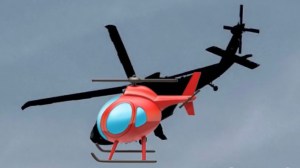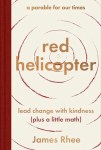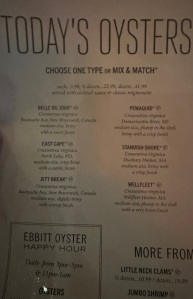Beware Of Externally Imposed Definitions Of Success

The word “success” is thrown around a lot today. When we discuss rethinking education, we discuss student success to the point it has become cliché. This is not do say we should not be considering success, but defining it is another beast entirely. Ten years ago when, as a superintendent, I was leading our schools through the strategic planning process, we adopted a definition of success. We adopted, and I still personally ascribe to the definition of Dr. Felice Kaufmann. She defined success as: “SUCCESS: Knowing what one wants in the world and knowing how to get it.” I love this because success is about each of us understanding what we want, not what is prescribed by someone else. Continuing my thoughts on education here I still believe we must help students find their own passions and interests and align those to values so they can define their own success. Then we facilitate going after that success.

I just finished the incredible book, Red Helicopter, by James Rhee. It really helped me sort out the concept of “success” even further. In the book Rhee explained that if we chase after externally imposed definitions of success, and you may find yourself feeling unfulfilled and disconnected rather than successful. This is genius! This idea of “externally imposed definitions of success” – think about how much we do this to ourselves, to others, and most importantly, our children.
James Rhee was cautioning against following society’s expectations of success without considering one’s own values and goals. He suggested that chasing after external definitions of success may lead to a feeling of emptiness and disconnection, rather than true fulfillment. It emphasizes the importance of staying true to oneself and finding personal fulfillment in one’s achievements. I believe we should consider that success looks different for all of us and it is not something we can graph with a straight line.
Watch What I Do

“Watch what I do. That’s your answer.” I loved this comment by Jack McCoy (Sam Waterston) in Law & Order Season 19 Episode 1 when he was asked by a reporter why the people of New York should elect him as District Attorney. He was saying loud and clear that actions speak louder than words. As leaders everyone is watching our every move. They are watching what we do and what we don’t do. This might disturb us, and it probably should disturb us, or at least remind us that our actions matter.
These actions can be big things as well as the little things. I had a great mentor tell me years ago that we need to be aware of all the little things that are communicating for us. How we show up every day matters. What we say, how we react, our facial expressions, how we text, how and when we email, or how we interact with others. You get the idea, EVERY action matters.
Just as Jack McCoy believed his actions and decisions spoke for themselves and should be enough to convince the people of New York to elect him as District Attorney, we need to be confident our abilities and actions. We mustn’t forget that what we do, say, and communicate every day is being watched. And rightly so!
The Reward of One Good Deed

I am about half way through my reread of The Horse and His Boy (1954) by C. S. Lewis and loving it. This is the 5th book in published order of The Chronicles of Narnia series. This book has a great many little quips that make me think of life’s many lessons. Yesterday I read, “He had not yet learned that if you do one good deed your reward usually is to be set to do another and harder and better one.” This quote was speaking of Shasta and it made me reflect on one of the things I have really had to watch, as a leader – when we have someone really good at something and shows how responsible, hard-working, or high achieving they are, I would often reward them with more work. I always had to remind myself how important it was to consider the well-being of others and not bombard them with constant requests for good deeds. It is important to spread out our requests in order for others’ abilities to also be developed and highlighted. We also need to show appreciation for the help we receive. Communication and gratitude are key in maintaining positive relationships when asking for help.

Some leaders justify this by considering it “pushing” the top performers. The problem is, many of those top performers see it as allowing the lower performers do less. An eye opener for me was when, several years ago, a top performer said to me, “I need you to stop pushing me so hard and come along side me and help me learn and grow some more.” Wow, I needed that punch to the gut. She was right! She didn’t want me to quit recognizing she was a top performer, but wanted me to not run her into the ground. Just as Shasta, in The Horse and His Boy, was learning “that if you do one good deed your reward usually is to be set to do another and harder and better one,” I was learning the effects those rewards.
The bottom line here is that we need to help manage the workload. Doing great work should lead to more responsibilities and opportunities for growth. This should not, however, mean just more work added to an already full plate. Adjustments must be made be made and when responsibilities are added, something needs to be subtracted. We must also at the same time create a positive culture of continuous improvement and growth. Appropriate recognition and rewards mixed with fair distribution of the organization’s work are key here.
Reading The Smoke Signals
This week I was having a conversation with a new friend and colleague who shared that at one point in her life those close to her were not reading the “smoke signals” she was sending. When they finally did, they were able to offer advice and support, but it had almost come too late. This really resonated with me. These smoke signals can work two ways – 1. we need to recognize and receive smoke signals; and, 2. we need to send smoke signals. As leaders, using emotional smoke signals involves being attuned to the emotions and needs of those we serve. This can include actively acknowledging others concerns, providing empathetic support, and creating a safe space for open communication. Again, we have a need to recognize these smoke signals and in addition we need to be sending these smoke signals for others. In my new friends case it had taken years for those in her life to see the smoke signals and give her the support and affirmation toward the feelings she was having that she needed. As leaders and friends we need to learn to recognize the alarm bells and reach out to those in need in soft and vulnerable ways, to be responsive and accessible.
By effectively interpreting and responding to the emotional cues (smoke signals), leaders can better understand the individuals they serve and provide the necessary support and guidance. Additionally, demonstrating empathy and compassion can help build trust and strengthen relationships within the organization. Smoke signals are such an apt metaphor as an ancient form of communication, symbolizing our attempts to reach out and connect, despite the emotional distance that may be between us.
These smoke signals also allow us to make sure that those we care about do not become anonymous. Every person represents a different dimension of diversity and we need to be creating an environment where each is able to bring a unique and valuable perspective. Our need for belonging is what drives us to long and stable relationships. I just did a training session on belonging this past week and I talked about how after our physiological and safety needs, belonging was next in the hierarchy. I believe belonging and reading the smoke signals go hand in hand here. Organizations where people can share their insecurities with their leaders will feel accepted, and team members whose leader is there to work with them through tough and touchy topics feel supported. All of this involves the sending and receiving of smoke signals.
If we want to develop our emotional fitness we must look for the information signals calling for action; or what I am calling “Smoke Signals” in this post. These smoke signals can be something we need to interpret or something we need to send. In this context, our emotions are not a place to which we’re consigned, but rather signals of valuable information on which to act. These signals allow for intentional action to serve our own best interests, as well as the best interest of those we serve.
I Like You Best When You Smile

We all know that simple gestures like smiling can have a big impact on others and brighten their day. I was reminded how different we look to others when we smile this week when I was having some professional photos done. When we were looking at the shots picking the ones the publisher wanted to use, the photographer said, “I like you best when you smile.” That really struck me and as I looked at the pictures, I like myself best when I smiled. Then as I continued to think about it I came to the conclusion that I like everyone best when they smile. That smile often signals that we appreciate and acknowledge the positivity that others bring into our lives. We should remember to compliment or acknowledge others’ smiles and the positive effect it has on us. Keep smiling!
Oh The Stories We Told!

Last night I had the opportunity to ponder the power of stories and sub-stories and the learning that occurs from them for young and old alike. I got into Washington D.C. last night for a board meeting and had the opportunity to go to one of my favorite restaurants with some friends. We went to Old Ebbitt Grill. Every year when I brought students here for National FFA’s Washington Leadership Conference, of which I always brought my son, Heath, from when he was six months old on up, we would eat at Old Ebbitt one evening. In fact last night I sent my son a picture of one of the bars in the restaurant with the question “Do you know where I am?” He immediately texted back, “The bar/restaurant that Teddy [Theodore Roosevelt] always went to right next to the White House.” He was spot on! We had sat in Old Ebbitt and talked about the President’s who had been there. In fact, on Old Ebbitt’s website it says, “…Presidents Ulysses S. Grant, Andrew Johnson, Grover Cleveland, Theodore Roosevelt and Warren Harding supposedly refreshed themselves at its stand-around bar.” My son and I used to sit and imagine the conversations based on what was going on in the country at the time. Those were some very real history, government, and civics lessons. Oh the conversations we had.

From a young boy on, my son has loved oysters. Old Ebbitt is known for their varied selection of fresh oysters (see photo for last evening’s list). Last night for my friends I modeled what Heath and I would do when picking oysters – we looked up where each of the oysters came from. Some of the places my friends had been to. Oh the stories that were told. In the end we tried four on the list based on places we had been. Again, oh the stories we told!

That’s the point of this post – the power and learning in the story. During the conversation last night with clanking dishes, loud laughter, a group singing happy birthday, and probably for others my loud voice in the background, one of my friends asked me why I had become so obsessed with C. S. Lewis. As you know, I just returned from spending a week at The Kilns. I told them I believe C. S. Lewis explained it best when he said, “What draws people to be friends is they see the same truth. They share it.” This quote is from the book “The Four Loves”. Lewis was telling us that true friendship is built on a foundation of shared beliefs, values, and understanding of the world. When people are able to connect on a deeper level and see things the same way, it creates a strong bond that can withstand test of time. Even though Lewis died the year I was born and coincidentally the same day as John F. Kennedy was assassinated, I feel a bond because of Lewis’s writing, storytelling and beliefs.
I was telling them that I am working through all the Chronicles of Narnia books right now in publication order and they are causing me to do a great deal of deep thinking and reflection. One of my friends piped up and said, “But those are children’s fairy tales.” Another friend yelled, “Well look who we’re talking to.” Touché! Seriously though, C. S. Lewis was the master at the skill of sub-creation. More about sub-creation in a minute. He created the fantastical world of Narnia, complete with its own mythology and history, which has captured the imaginations of readers for generations. Lewis’s ability to craft a rich and immersive fictional universe is a testament to his talent as a writer and his understanding of the power of myth and storytelling.
“Sub-creation” is a term coined by J.R.R. Tolkien, one of Lewis’s friends and member of the Inklings, to describe the act of creating fictional worlds or stories within a larger, pre-existing world. In Tolkien’s view, sub-creation is a form of artistic expression that allows individuals to tap into their creativity and imagination to produce new works that are inspired by or connected to existing mythologies or narratives. By engaging in sub-creation, artists and writers can contribute to the richness and depth of a fictional universe while also exploring themes and ideas that resonate with their own experiences and beliefs. It is a powerful form of creative expression that allows for endless possibilities and interpretations.
I believe this is why I have been so drawn to fictional work the last several years. It allows me to expand my thought beyond our preexisting narrow world. Lewis didn’t tell or right a story that didn’t draw us in to be a part of his world, whether fantastical, real, or visionary. What stories do you need to tell?
Leading At The Right Pace

I started reading C. S. Lewis’s third (in published order) Chronicles of Narnia book, The Voyage of the Dawn Treader, on my way home from my second England adventure to Oxford and The Kilns. As I read I was reflecting on how fast my study trip went. It was a little like when Susan, Lucy, Peter, Edmund, and now their cousin Eustace go to Narnia. It doesn’t matter how long they are in Narnia, when they return it is the same day and the same hour as when they left. My time went by quickly, and it seems like I just left, but I am so blessed to have had the opportunity to study yet another time in my own Narnia that had been just a place in books and stories, but made real by my being there. Now, like the children on Narnia, I am ready to go back.
In the fifth chapter, Eustace goes off by himself and gets lost and then says, “It is very unpleasant to have to go cautiously when there is a voice inside you saying all the time, “Hurry, hurry, hurry.” This is what I love about Lewis – the deep meaning and cause for thinking he artfully put in his work.

The lesson in that comment from Eustace is about the importance of balancing our inner desires for speed and urgency with the need to proceed cautiously and thoughtfully. Sometimes our impulsive urges can lead us astray, so it’s important to listen to that voice inside us that urges caution and patience. As a person whose modus operandi is “Damn the torpedos, full speed ahead” or “Let’s keep our foot on the gas,” this was a good piece for me to reflect on. It’s all about finding the right balance between moving quickly and taking necessary precautions.
The Greeks have a lot of idiomatic sayings about this slowing down. The most common one is probably “siga, siga” which when translated to English means “slow, slow.” Just like the pondering about balancing speed and caution in my previous paragraph, “siga siga” reminds us to proceed with care and deliberation rather than rushing into things impulsively. The reminder here, at least for me, is it’s all about finding the right pace and approach for each situation.
The Answer Is Always No Until You Ask

While flying from London to Boston today, I took a break from writing and watched the first three episodes of Tulsa King. How have I not watched this before now? It was incredible. Sylvester Stallone has always been a favorite of mine, but he is perfect for the role of Dwight “The General” Manfredi. In one of the three episodes he told his newly hired driver, or “associate” as he was called, Tyson Mitchell (Jay Will), that “The answer is always no until you ask.” Truer words were never spoken. We can’t get to a yes without an ask. Or, as I always say: “What’s the worst thing that can happen? I get told no.” But as we were clearly reminded here, without the ask the answer was for sure no.
Even if we get a no, it is better have asked and know the outcome rather than wonder “what if.” Plus asking for what you want can lead to opportunities and advancements that we might not have gotten otherwise. It’s all about taking initiative and not being afraid of rejection.
Another thing I thought of while watching was the power of asking “why not?” Ever made someone answer that when they told you no and then they don’t have an answer? Some people just always say no. Lesson here. What if we hold ourselves accountable to know exactly why an answer is no. And what if we give an authentic answer to the question.
Bottom line: go ahead and ask!
I Want Everyone To Know My Name!

We all know that knowing someone’s name and using it during interactions can create a more personalized and positive customer experience. This was also very important to me when I was teaching. Anyone who I have worked with as a facilitator will tell you that I take great pains to make sure I know names and most importantly pronounce them correctly. Pronouncing names correctly is a huge show of respect.
Knowing a person’s name shows that you are paying attention and acknowledging them as an individual, making them feel valued and appreciated. Using someone’s name can also help build rapport and establish a connection, leading to better communication and ultimately a stronger relationship.
I had this modeled for me perfectly this morning by my driver from Oxford to London Heathrow International Airport. We had a lively discussion on the one hour drive and it made me feel so engaged and valued as he continued to use my name. I was so engaged that I had him pronounce his name for me so I could reciprocate in kind. I have always been impressed with everything about Blacklane chauffeur service and always use them, when they are available where I am traveling. In my University of Oxford studies on professional service firms we discuss the customer experience at length and how important the human element is. Blacklane gets this and walks the walk.
As I write this I am reminded of the Cheers theme song (Where Everybody Knows Your Name):
Making your way in the world today takes everything you’ve got.
Taking a break from all your worries, sure would help a lot.
Wouldn’t you like to get away?
Sometimes you want to goWhere everybody knows your name, and they’re always glad you came.
You wanna be where you can see,
our troubles are all the same
You wanna be where everybody knows your name.You wanna go where people know,
people are all the same,
You wanna go where everybody knows your name.
Making our way in today’s world does take a lot. I’m glad that Mubashir Hussain took the time to know my name. He enabled a sense of belonging during our short trip together. Is knowing and using names a key part of your customer experience?
We Have Had A Time

This afternoon I finished reading Prince Caspian, the second book published in the Chronicles of Narnia series in 1951. This was the C. S. Lewis book I chose to read while at The Kilns this week as part of my Visiting Scholar in Residence program. I already blogged about the book and why I picked it in The Path To Honor. The last lines in the book pull the entire story together perfectly: “Well!” said Peter. “We have had a time.” “Bother!” said Edmund. “I’ve left my new torch in Narnia.” Susan, Lucy, Peter, and Edmund had certainly had another adventure. Quite the time!
When Edmund says “I’ve left my new torch in Narnia,” he is referring to the fact that as a king of Narnia, he has gained courage, wisdom, and strength that will stay with him even after returning to the real world. Lewis used a great metaphor in the form of a torch to symbolize his growth and the lessons he learned during his, now two, times in Narnia.
We need to acknowledge the new torches we acquire on our own journeys in the form of experiences, new knowledge and skills. We need to make sure those new torches stay with us, but not be afraid to leave behind for others to learn from us as well. Go have the time of your life.

leave a comment